Trout, the very word conjures images of pristine streams, glistening waters, and the thrill of the chase. Among the vast array of freshwater fish, trout stand out as nature’s exquisite gem, captivating anglers with their beauty, resilience, and delectable flesh. In this exploration of trout species, we delve into the enchanting world of Rainbow, Brown, Brook, Cutthroat, and Lake trout, each possessing its own unique charm and allure.
1. Introduction to Trout
Trout, belonging to the Salmonidae family, are renowned for their vibrant colors, sleek bodies, and remarkable adaptability. These cold-water species inhabit various aquatic environments, from swift-flowing rivers to tranquil mountain lakes, making them a prized catch for anglers worldwide.
2. The Majestic Rainbow Trout
Appearance and Characteristics
Rainbow trout, aptly named for their iridescent hues, boast a striking combination of pink, red, and silver tones. Their streamlined bodies and distinct black speckles make them a sight to behold, reflecting the splendor of their natural habitat.

Habitat and Distribution
Found in both freshwater and saltwater habitats, Rainbow trout thrive in clear, cold streams and lakes across North America, Europe, and Asia. Their adaptability allows them to flourish in diverse environments, from mountainous regions to coastal waters.
Fishing Tips
Anglers seeking the elusive Rainbow trout often employ a variety of techniques, including fly fishing, spin casting, and bait fishing. Matching the hatch with natural or artificial flies proves effective, while drifting bait along current seams and eddies can entice even the most wary trout.
3. The Alluring Brown Trout
Distinctive Features
Brown trout, renowned for their bronze-colored bodies and vibrant markings, possess a regal elegance that sets them apart. With distinctive red spots surrounded by pale halos, these majestic fish exude a sense of timeless grace and beauty.
Preferred Environment
Preferring cool, oxygen-rich waters, Brown trout inhabit rivers, streams, and lakes throughout Europe, North America, and beyond. Their secretive nature and selective feeding habits present a challenge for anglers, requiring patience and finesse to lure them from their hiding places.
Techniques for Catching
To tempt the elusive Brown trout, anglers often rely on stealth and precision. Using lightweight tackle and natural presentations, such as nymphs or small minnow imitations, can yield success in clear, shallow waters. Patience and perseverance are key when pursuing these wary inhabitants of the stream.
4. Exploring the Enigmatic Brook Trout
Physical Attributes
Brook trout, adorned with vibrant colors and intricate patterns, embody the essence of wilderness beauty. With their olive-green backs, vivid red spots, and haloed fins, these captivating fish evoke a sense of awe and wonder.
Habitat and Behavior
Native to cold, clear streams and lakes of North America, Brook trout thrive in pristine environments with ample cover and oxygenation. Their elusive nature and voracious appetite for insects make them a challenging quarry for anglers, requiring skill and finesse to entice them to strike.
Best Practices for Anglers
When pursuing Brook trout, anglers often employ stealth and observation to locate feeding fish. Casting delicate dry flies or small nymphs to likely holding spots can yield exciting results, as these opportunistic predators are quick to pounce on passing prey.
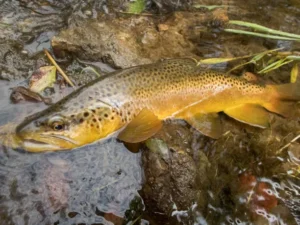
5. The Resilient Cutthroat Trout
Description and Traits
Cutthroat trout, named for the distinctive red slashes beneath their jaws, possess a rugged beauty and tenacious spirit. With their olive-green backs, golden flanks, and scattered black spots, these resilient fish embody the untamed wilderness they call home.
Where to Find Them
Inhabiting cold, clear waters throughout North America, Cutthroat trout favor pristine mountain streams, alpine lakes, and coastal estuaries. Their nomadic nature and preference for swift currents make them a challenging yet rewarding target for anglers seeking adventure.
Recommended Baits and Lures
To entice Cutthroat trout, anglers often rely on natural presentations, such as small streamer flies or imitation baitfish patterns. Drifting nymphs or casting dry flies to likely holding lies can elicit aggressive strikes from these voracious predators, providing thrills aplenty for those willing to brave the wild.
6. Unraveling the Mystery of Lake Trout
Characteristics and Behavior
Lake trout, the giants of cold-water lakes, command respect with their massive size and formidable strength. With their mottled green backs, pale yellow spots, and deeply forked tails, these enigmatic fish inspire awe and admiration in anglers worldwide.
Prime Locations for Fishing
Found in deep, cold lakes and reservoirs throughout North America, Europe, and beyond, Lake trout prefer deep, oxygen-rich waters with ample forage. Trolling with large spoons or diving plugs near thermoclines or underwater structures can produce trophy-sized specimens for intrepid anglers.
Effective Strategies for Success
When targeting Lake trout, anglers often employ deep-water trolling or vertical jigging techniques to reach the depths where these elusive giants lurk. Using heavy tackle and stout rods, anglers can battle these powerful fish with skill and determination, relishing the challenge of landing a true trophy.
7. Conclusion
Trout, with their grace, beauty, and indomitable spirit, hold a special place in the hearts of anglers everywhere. Whether casting a fly on a mountain stream or trolling a lure on a tranquil lake, the pursuit of trout offers moments of exhilaration, serenity, and connection with nature. As stewards of these fragile ecosystems, let us cherish and protect these majestic fish for generations to come.
FAQs (Frequently Asked Questions)
- Are trout good for eating?
- Yes, trout are prized for their delicious flesh and are often prepared in various culinary dishes.
-
What is the best time of year to fish for trout?
- The best time to fish for trout varies depending on the species and location, but generally, spring and fall offer optimal conditions for angling success.



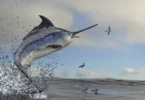

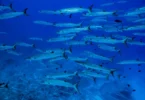
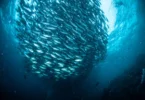
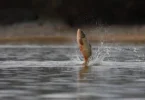
Leave a Comment